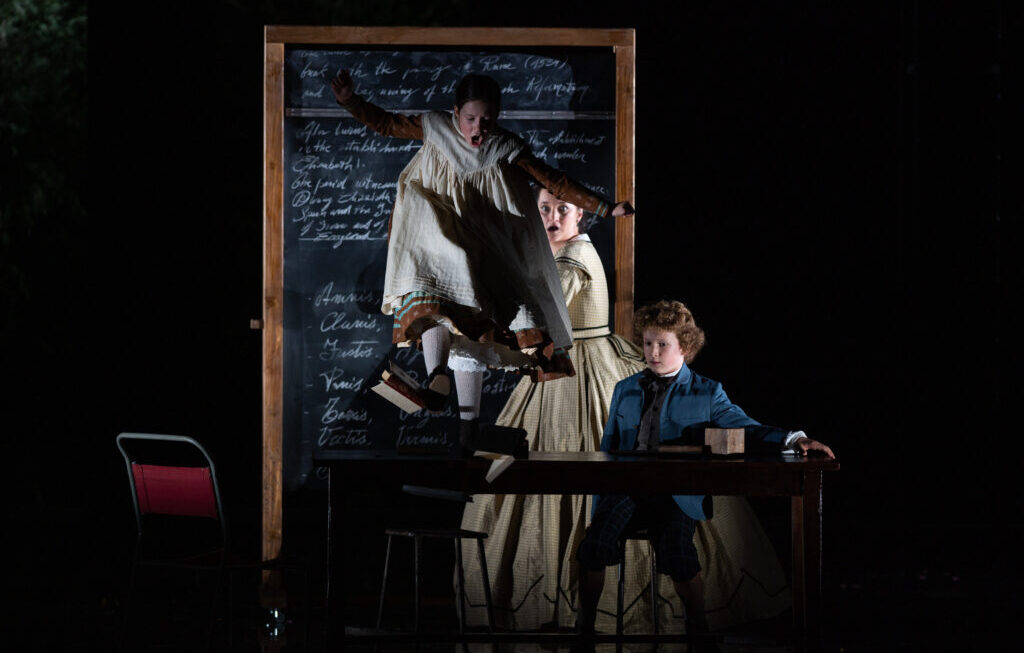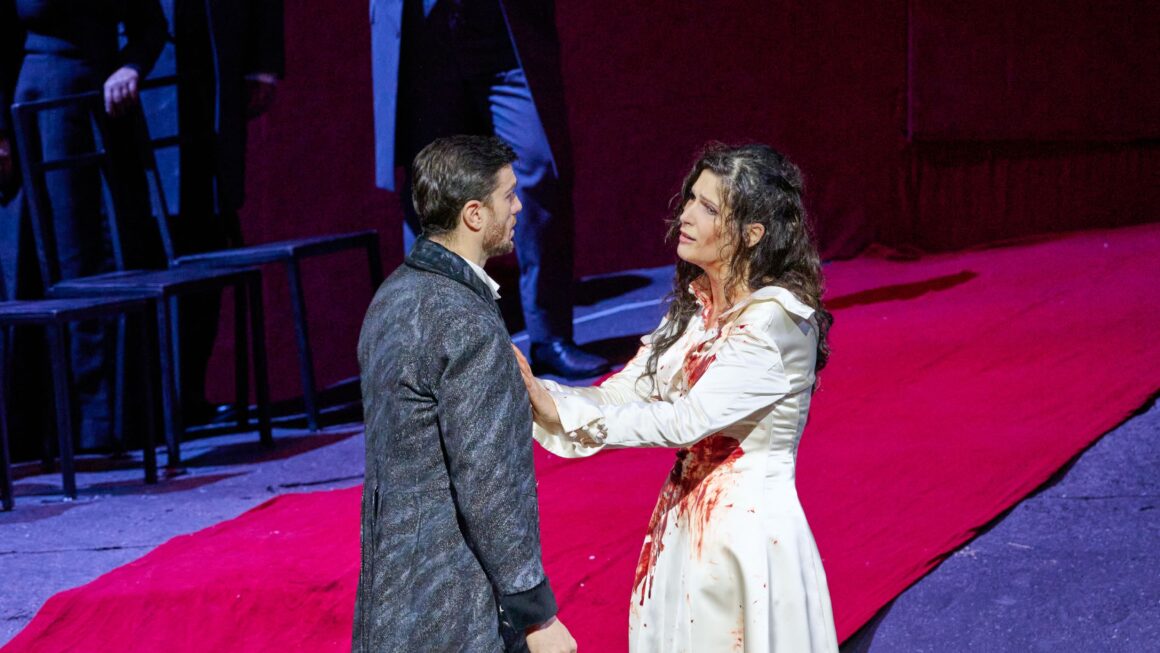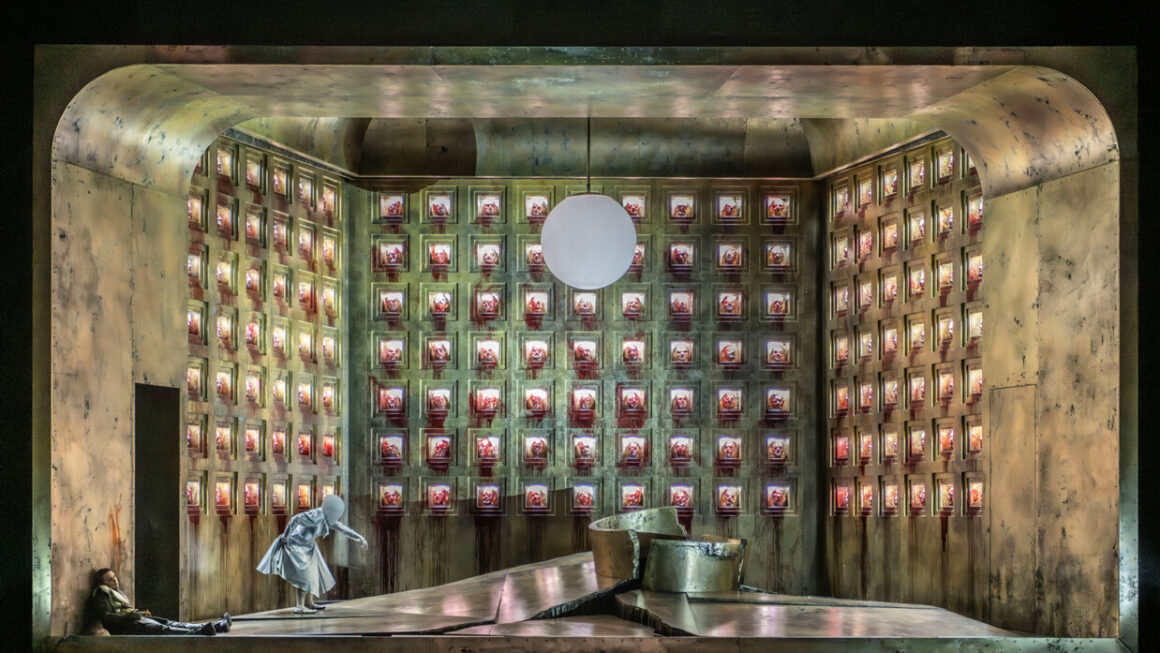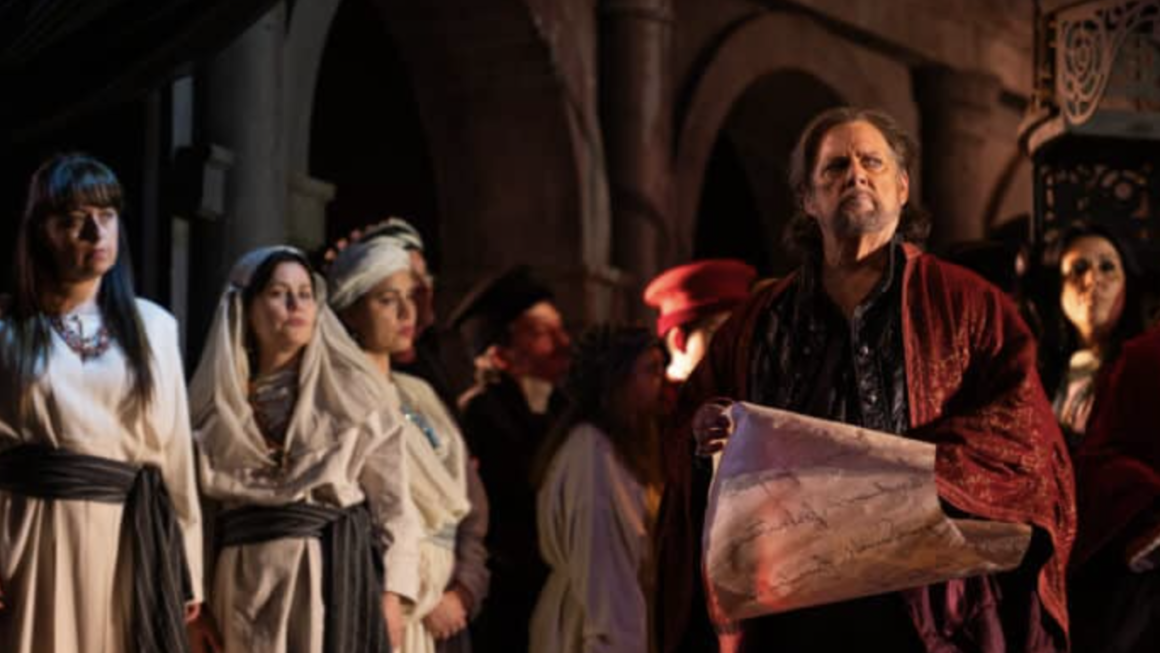To conclude the 2024-2025 season, the Rome Opera presents an exemplary production of Benjamin Britten’s masterpiece, The Turn of the Screw, an opera that premiered on September 14, 1954, at the Teatro La Fenice in Venice, with a libretto based on Henry James’s novel of the same name. Written in 1897, the book is a ghost story, brimming with suspense and mystery, anguish and the supernatural. A young governess is sent to a remote country residence to care for two young orphans, Miles and Flora, with the help of a more experienced governess, Mrs. Grove. She soon begins to see the ghosts of Peter Quint and Miss Jessel, the rough-mannered house valet and the governess’s predecessor, who died under suspicious circumstances, appearing around the house and garden.
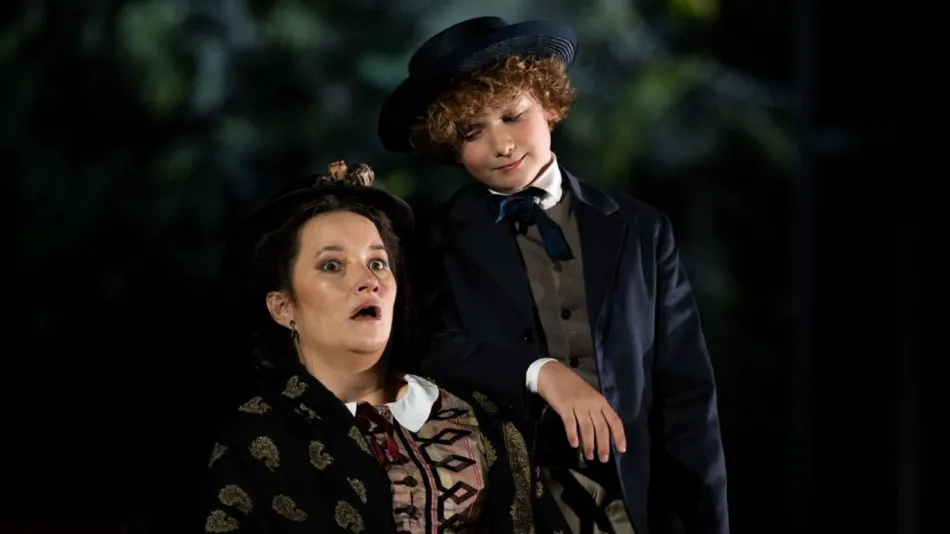
Convinced that the ghosts interact with and haunt the children, the governess tries in every way, in a crescendo of suspense, to free them from their threatening influence, until the dramatic finale, in which Miles, after banishing the ghost, “Peter Quint, you devil,” dies in her arms. The story plays on ambiguity: do the ghosts that appear to the children really exist, or are they the product of the governess’s imagination and hallucinations, her anguish and repressions?
In the operatic adaptation of Myfanwy Pipe’s libretto, the story, and consequently the music, develop the typical themes of Britten’s opera, particularly the corruption of childhood by the adult world and repressed homosexuality. A prime example of this is the inclusion of the poet W.B. Yeats’s line “the ceremony of innocence is drowned” at the beginning of the second act. While in James’s novel the ghosts merely appear, in Britten’s opera they are actual characters, singing with tenor and soprano voices; it’s worth remembering that the first interpreter of Peter Quint was Peter Pears, Britten’s lifelong companion. Much also could be said about the opera’s mathematical musical structure, based on the 12 semitones of the tempered scale, which follow one another throughout the 16 scenes of two acts, like a turn of the screw, but this is not the right place.
The Rome production finds its fulcrum in the staging of the British director Deborah Warner, known for her performances at the Royal Shakespeare Company and for her innovative operatic direction, acclaimed at the world’s leading theaters. The story unfolds on a very simple stage set: a dark room with few furnishings that appear and disappear, a piano, a chair, a blackboard, which opens in the background to reveal the garden of Bly’s country house, where part of the action takes place. The show, which required 50 days of rehearsals at Warner’s specific request, draws its strength from the acting and stage movements of the performers: the three sopranos, the tenor, and especially the two extraordinary children who play Miles and Flora. It is precisely from the perspective of the young people that the show marvelously unfolds, in which the ghost story is merely a pretext to recount the gradual loss of childhood innocence in the cruel world of adults. The company is nearly perfect, and the small orchestra allows the voices to expand easily in the large Costanzi hall.
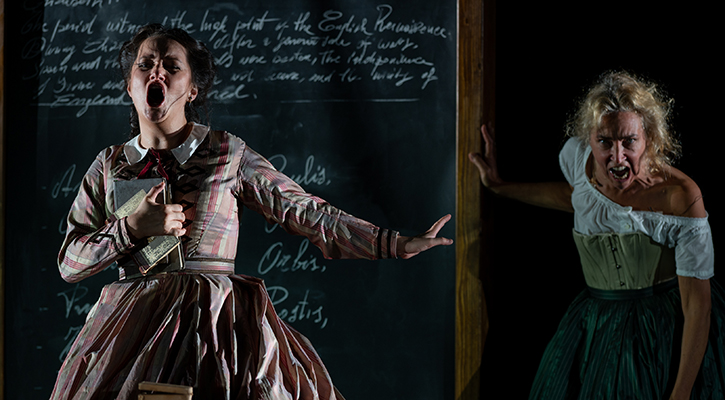
In the role of the ghost Peter Quint excels the English tenor Ian Bostridge, the greatest active interpreter of Britten roles. Bostridge, in the footsteps of Peter Pears, also plays the prologue, where he recounts the backstory accompanied by the piano, the favored instrument of the upper bourgeoisie. He is exceptional in his rendition of the hypnotic and erotic vocalizations and arabesques with which he tries to lure little Miles and how he dramatically phrases the dark melody in the terrible finale.
The Austrian-British soprano Anna Prohaska, sings the role of the governess with a full lyric soprano voice, capturing all the turmoil and complex personality of this Victorian-era virgin with exemplary phrasing and a variety of accents. Emma Bell is excellent as Mrs. Grove, the governess, gifted with a resonant and powerful vocal instrument, with which she successfully portrays a character who is initially reassuring and gradually drawn by the governess into the vortex of her visions and ghosts.
Christine Rice is a highly effective Miss Jessel, finding a crystalline and ghostly voice, and portraying a character ambiguous in her relationship with Peter Quint and seductive with little Flora. Zandy Hull and Cecily Balmforth are the stars and triumphs of the evening as young Miles and Flora; vocally and musically, they are practically prefect, without a hint of weakness in the extremely challenging score. Scenically, they exceptionally convey Deborah Warner‘s interpretive reading and extensive, complex work. The orchestra is conducted by the young British conductor Ben Glassberg, making his Rome debut, building on a career in major European theaters. The opera is written for a chamber ensemble of only 13 instrumentalists, and Glassberg manages to master it with great narrative and emotional tension. The fifteen instrumental interludes that connect the scenes are flawless, the tempo choices are evocative, and the detailed description of the atmosphere and the characters’ psychologies is meticulous and thrilling.
CAST
The Prologue / Quint: Ian Bostridge
Governess: Anna Prohaska
Miles: Zandy Hull
Flora: Cecily Balmforth
Mrs Grose: Emma Bell
Miss Jessel: Christine Rice
CONDUCTOR: Ben Glassberg
DIRECTOR: Deborah Warner
Set Designer: Justin Nardella
Costume Designer: Luca Costigliolo
Light Designer: Jean Kalman
Stage movements: Joanna O’Keeffe

